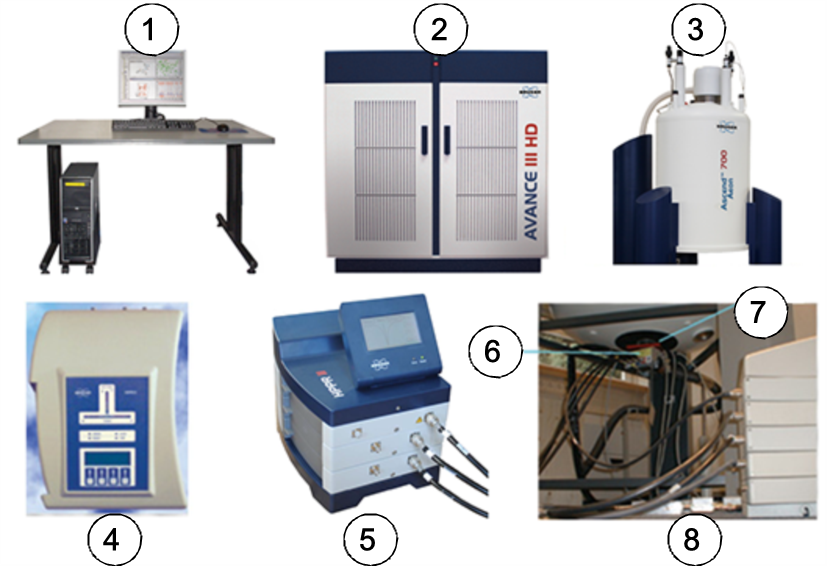Magnet, Shim System, HPPR and Probe
The magnet generates the magnetic field required to induce NMR transitions. To maintain a superconducting system the magnet core is cooled to very low temperatures using liquid nitrogen and helium (for more details see the section The Magnet and Magnet Dewar).
The room temperature shim system, mounted into the lower end of the magnet, is a set of current carrying coils (known as shims) used to maximize field homogeneity by offsetting any existing in homogeneities. The currents in these room temperature shims (so called as they are not cooled by being immersed in a bath of liquid helium) are controlled by the BSMS and may be adjusted from the BSMS display to optimize the NMR signal. This has a major effect on signal resolution and sensitivity. This action of adjusting the currents in the room temperature shims is referred to as shimming the magnet.
Photo of Magnet, Shim System, Probe and HPPR
Although the HPPR (High Performance Preamplifier) carries the transmitted signal to the sample it is primarily concerned with magnifying the relatively weak signals emitted from the sample. It is located at the base of the magnet to amplify the NMR signal at the earliest possible opportunity and thus minimize losses along the cable. Once the signal has been amplified with the HPPR any subsequent losses in cabling are less critical. The HPPR also transmits and receives the deuterium (or fluorine) lock signals and is used in the wobble routine. Up to 5 (HPPR) or 8 (HPPR/2) individual modules (excluding the cover module which is always present) may be configured. A very common configuration consisting of three individual modules is a Proton, X-BB and 2H along with a cover module.
The probe is inserted into the shim system at the base of the magnet and essentially consists of various coils used to transmit the excitation pulses to the sample as well as receive the emitted signal. The probe also transmits and receives the lock signal.


